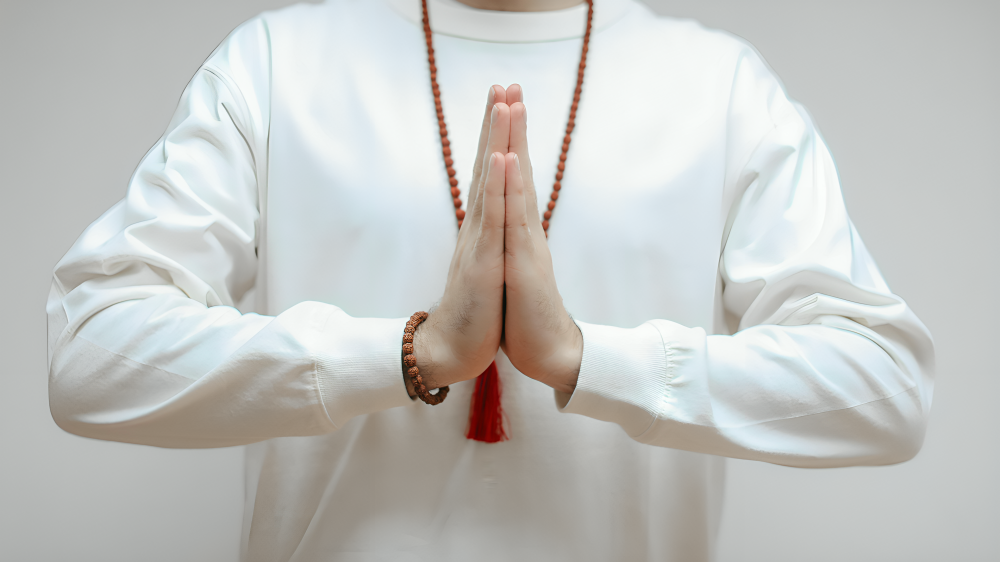
Practicing yoga brings together the mind, body, and spirit in a way that few other activities can. One of the simplest yet most profound gestures in yoga is Anjali Mudra. Known also as the “Salutation Seal” or “Prayer Position,” this gesture is more than just a way to position your hands. It’s a practice that can help center your thoughts, promote relaxation, and bring about a sense of inner peace.
What is Anjali Mudra?
Anjali Mudra is a hand gesture used in many yoga practices. The word “Anjali” means offering, and “Mudra” means seal or gesture. This gesture involves pressing the palms of your hands together in front of your heart, fingers pointing upwards. It’s often used at the beginning and end of yoga sessions, during meditation, or as a way to show respect and gratitude.
How to Do Anjali Mudra
Performing Anjali Mudra is simple, but its impact can be significant. Here’s a step-by-step guide to help you get started:
Find a Comfortable Position: Sit or stand comfortably. If you’re sitting, cross your legs in a relaxed position. If standing, keep your feet hip-width apart.
Relax Your Shoulders: Allow your shoulders to drop away from your ears, creating space and relaxation in your upper body.
Bring Your Hands Together: Press your palms together in front of your heart. Your fingers should be pointing upwards, and your thumbs should gently rest against your sternum.
Close Your Eyes: Closing your eyes can help you focus inward and be more present in the moment.
Breathe Deeply: Take slow, deep breaths in and out. Feel the connection between your hands and your heart, and allow yourself to relax with each exhale.
Set an Intention: If you wish, you can set an intention or offer gratitude during this time. This can enhance the practice and give it more personal meaning.
Benefits of Anjali Mudra
Anjali Mudra offers several benefits for both your mind and body. Here are some of the key advantages:
Promotes Calmness and Relaxation: The act of bringing your hands together and focusing on your breath can help calm your mind and reduce stress.
Enhances Concentration: This gesture helps center your thoughts, making it easier to concentrate during meditation or yoga practice.
Improves Posture: Practicing Anjali Mudra encourages proper alignment of your spine and shoulders, which can improve your overall posture.
Fosters a Sense of Unity: This gesture symbolizes balance, unity, and connection, not only within yourself but also with others and the universe.
Encourages Gratitude: By setting an intention or offering gratitude while performing Anjali Mudra, you can cultivate a positive mindset and appreciate the present moment.
Supports Heart Health: The position of the hands and the deep breathing involved in this practice can promote cardiovascular health and increase oxygen flow in the body.
Its here Benefits of Kapalabhati need to know
Incorporating Anjali Mudra into Your Routine
You can integrate Anjali Mudra into various aspects of your daily life, not just during yoga sessions. Here are a few suggestions:
- Morning Routine: Start your day with a few moments of Anjali Mudra to set a positive tone.
- Before Meals: Practice this gesture before eating as a way to give thanks and promote mindful eating.
- During Stressful Moments: When you feel stressed, take a moment to perform Anjali Mudra and breathe deeply to regain your calm.
- At Bedtime: Use this gesture as part of your bedtime routine to reflect on your day and set intentions for restful sleep.
FAQs
Q: Can anyone perform Anjali Mudra?
A: Yes, Anjali Mudra is suitable for people of all ages and fitness levels.
Q: How long should I hold Anjali Mudra?
A: You can hold the gesture for as long as it feels comfortable. Even a few moments can be beneficial.
Q: Is there a specific time of day best for practicing Anjali Mudra?
A: Anjali Mudra can be practiced at any time. Some people find it particularly beneficial in the morning or before bed.
Q: Can Anjali Mudra be combined with other yoga poses?
A: Absolutely! It’s often used in conjunction with other poses and during meditation.

